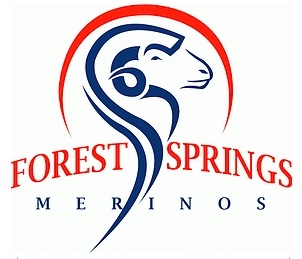
This article is bought to you by Forest Springs Merinos.
By Matt Dalgleish | Source: MLA, Mecardo.
Last week we looked at our record sheep and lamb prices in foreign buyer terms on Mecardo and a cattle producer subscriber got in touch to see if we could do the same for our beef analysis piece. When assessing offshore markets, we often focus on US dollar prices but given that China now takes more than 20% of our export beef we thought to shine the spotlight on the Chinese Yuan for this analysis.
Ad - Forest Springs Merinos will be displaying at Hamilton and Marnoo in the lead up to the on-property Ram Sale on 26th of September - Ad
Ad - Forest Springs Merinos will be displaying at Hamilton and Marnoo in the lead up to the on-property Ram Sale on 26th of September - Ad
Domestic Australian sale yard prices for the National Heavy Steer for the last two decades is highlighted in Figure 1 and shows that from 2000 to 2015 prices traded within a 270-370¢ range on a carcass weight basis. The rally in cattle prices post the 2014/15 drought have seen Heavy Steer prices settle within a 450-550¢ range, in Australian dollar terms.


In contrast, an elevated Australian dollar to the Chinese Yuan (CNY) during the mid-2000s and particularly during 2011 (when the A$ also went above parity against the US dollar) saw a pronounced step up in Heavy Steer prices in Yuan terms during the 2000 to 2015 period. Indeed, the Heavy Steer in Yuan went from a 10-15CNY range during 2000 - 2003 to a 17-23CNY range between 2003 - 2008, Figure 1.
After a brief dip post the global financial crisis the Heavy Steer reached over 25CNY in late 2011. However, the rally in domestic Australian beef prices since 2015 has coincided with the AUD/CNY exchange rate depreciating 32% from its peak in 2011 above 7.11 to around 4.81 – Figure 2. The falling AUD/CNY has insulated the Chinese beef importer from increased domestic prices in Australia for finished cattle.




While favourable currency movements have assisted the Chinese beef importer in recent times the African Swine Fever (ASF) epidemic has seen pig prices skyrocket in some Chinese regions. Pig prices in Shanghai are currently 80% higher than they were in May 2018, just prior to outbreak of ASF. In contrast, Australian Heavy Steer prices in CNY terms have only increased 20% since May 2018 - Figure 3.


Key points
* Strong domestic Australian cattle prices since the 2015 drought eased have been offset in China by a depreciating AUD/CNY exchange rate
* The AUD/CNY is currently trading 32% below its 2011 peak
* Since the outbreak of ASF, pig prices in China have increased 80% compared to a 20% lift for the National Heavy Steer in AUD/CNY terms
Ad - Forest Springs Merinos will be displaying at Hamilton and Marnoo in the lead up to the on-property Ram Sale on 26th of September - Ad
Ad - Forest Springs Merinos will be displaying at Hamilton and Marnoo in the lead up to the on-property Ram Sale on 26th of September - Ad
What does this mean?
In Chinese Yuan terms the National Heavy Steer is currently sitting at around 27 Yuan/kg cwt and is nearly 20% off the historic highs recorded post the 2015 drought. Within the last five years Chinese importers of Aussie beef have paid more per kilo in Yuan to secure product.
Furthermore, in relative terms compared to pig price movements since the outbreak of ASF, the price gains in imported beef from Australia isn’t excessive enough to create strong headwinds on Chinese demand. This should remain the case while the AUD/CNY levels remains favourable for Aussie beef exporters and the supply/health concerns surrounding the pork industry within China encourage consumers toward alternative protein sources.











Share Ag News Via